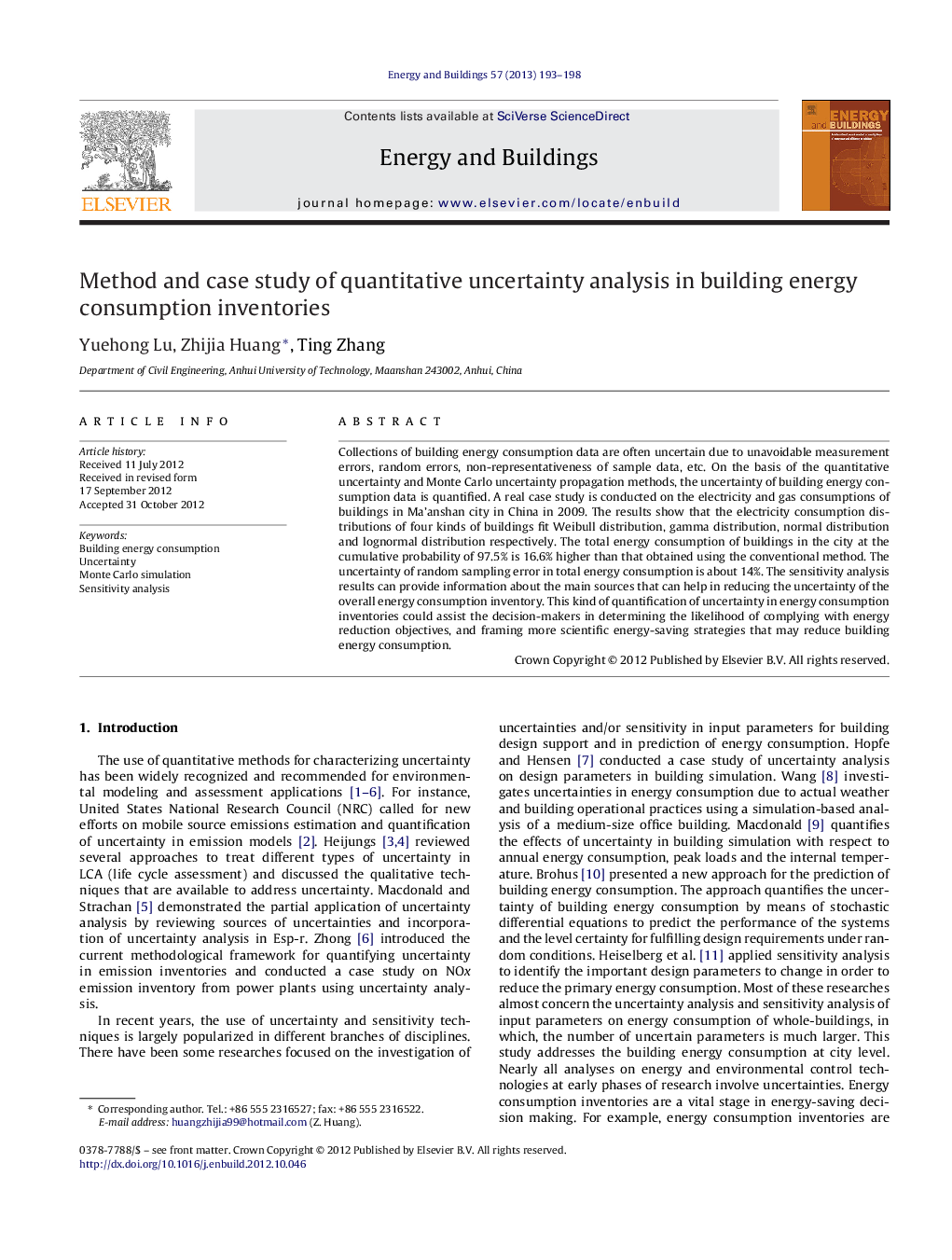| Article ID | Journal | Published Year | Pages | File Type |
|---|---|---|---|---|
| 263576 | Energy and Buildings | 2013 | 6 Pages |
Collections of building energy consumption data are often uncertain due to unavoidable measurement errors, random errors, non-representativeness of sample data, etc. On the basis of the quantitative uncertainty and Monte Carlo uncertainty propagation methods, the uncertainty of building energy consumption data is quantified. A real case study is conducted on the electricity and gas consumptions of buildings in Ma’anshan city in China in 2009. The results show that the electricity consumption distributions of four kinds of buildings fit Weibull distribution, gamma distribution, normal distribution and lognormal distribution respectively. The total energy consumption of buildings in the city at the cumulative probability of 97.5% is 16.6% higher than that obtained using the conventional method. The uncertainty of random sampling error in total energy consumption is about 14%. The sensitivity analysis results can provide information about the main sources that can help in reducing the uncertainty of the overall energy consumption inventory. This kind of quantification of uncertainty in energy consumption inventories could assist the decision-makers in determining the likelihood of complying with energy reduction objectives, and framing more scientific energy-saving strategies that may reduce building energy consumption.
► A generic method to quantify the uncertainty in energy consumption is proposed. ► Uncertainties in energy consumption intensities of buildings are analyzed. ► Distributions of energy consumption of different types of buildings in a city are predicted. ► Effective ways to reduce uncertainty in the energy consumption inventory are identified.
